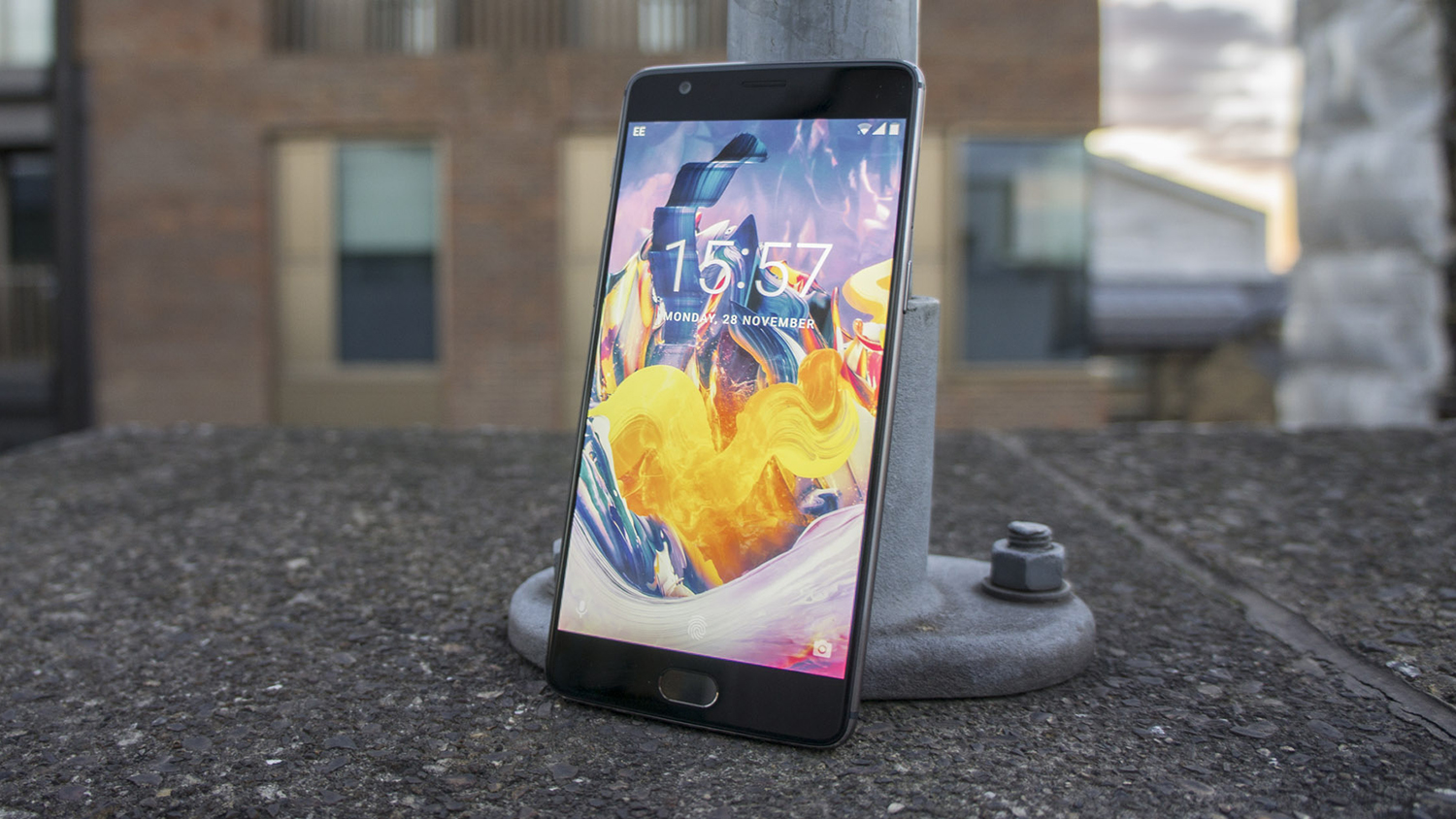OnePlus 3T review: gone, but not forgotten
Despite being discontinued, the OnePlus 3T is one of the best phones around


When flagship-quality specs are this cheap, why would you bother buying anything else?
-
+
Outstanding value; Impressive performance; Attractive design
-
-
Not as good value as the OnePlus 3; No MicroSD card slot

The OnePlus 3 was something of a sensation when it arrived on the tech scene last year. One of the first OnePlus devices to be launched outside of the company's invite-only sales model, it offered flagship-grade specs for an impressively cheap price of just 329.
Just five months later, the company announced that it would be retiring the OnePlus 3 in favour of an updated model: the OnePlus 3T. In a similar vein to the iPhone 's' models, it features slightly upgraded hardware, but with a 70 increase in price.
The OnePlus 3T was one of the most impressive phones of last year, an even more capable update to an already impressive device. It is with great sadness, then, that we report that our beloved OnePlus 3T is no more.
The company has announced that the OnePlus 3T will shortly be discontinued, with the last few units of stock in the OnePlus 3T's supply chain rapidly being snapped up. OnePlus will continue to issue support patches and software updates to the OnePlus 3 and 3T, but the phone will very shortly be unavailable for purchase.
This is, of course, in advance of the launch of the OnePlus 5, set to be officially unveiled by the company in the summer of 2017. Although we have high hopes for its successor, the OnePlus 3T will always hold a special place in our hearts as one of 2016's best smartphones.
Design
While it's hardly breaking the mold, the OnePlus 3T's anodised aluminium chassis is nevertheless an excellent example of a common design. The gently rounded rear shell feels comfortable in the hand, and the sharply-angled edges ensure that it stays firm and secure. The tapered edges also make it feel thinner than its 7.35mm depth actually is.
Elsewhere, there are other nice touches - one feature we particularly like is the three-way slider switch above the volume rocker, used to flick between full ring, silent and do not disturb modes. Other features include a fingerprint sensor mounted in the capacitive home button, and a USB Type-C charging port.
Sign up today and you will receive a free copy of our Future Focus 2025 report - the leading guidance on AI, cybersecurity and other IT challenges as per 700+ senior executives
The OnePlus 3T is classy, understated and a lot more premium in its design than its 400 pricetag would suggest. It's not vastly different to its predecessor - but then it doesn't really have to be, as the OnePlus 3 remains a very attractive and well-built device.
Display
There's not a huge amount to say about the OnePlus 3T's display. The 5.5in AMOLED panel is unchanged from the previous model, and while the 1080p resolution isn't quite as pin-sharp as its QHD rivals, the perfect contrast and high brightness are excellent points in its favour.
An oversaturated colour palette was the original OnePlus 3's only Achilles Heel in terms of display, but given that this was fixed by a post-launch software update, there really is very little to complain about here.
Software
OnePlus fans will know that the company uses its own variant of the Android operating system, known as Oxygen OS. It's virtually identical to stock Android, aside from a few subtle tweaks and some extra customisation options. We almost prefer it to vanilla Android - especially now that OnePlus has updated it to a version based on Android Nougat.
Specs & performance
There's no expandable storage on offer with the OnePlus 3T, which might seem like a problem, until you remember that it comes with a generous 64GB of internal storage as standard. There's now a 128GB model on offer too, for those with truly massive appetites.
As with the previous model, the OnePlus 3T comes with a faintly staggering 6GB of RAM, which we feel is a tad excessive. Not only is it a bigger allocation than some laptops have, it's also rare to see Android apps that are optimised to truly take advantage of it. That said, it does mean the OnePlus 3T is somewhat future-proofed and more powerful hardware is rarely a bad thing.
Speaking of more powerful hardware, this is one of the few areas in which the latest OnePlus model has had a clear upgrade over the previous iteration, making the jump from a 2.15GHz Qualcomm Snapdragon 820 processor to a 2.35GHz Snapdragon 821.
The new quad-core chip supposedly confers a 10% boost in performance versus the OnePlus 3, and while we only noticed an increase of around half that in our tests, both phones remain incredibly quick. In fact, the only device to beat them was the Samsung Galaxy S7, which is still over 200 more expensive than the OnePlus 3T.
Adam Shepherd has been a technology journalist since 2015, covering everything from cloud storage and security, to smartphones and servers. Over the course of his career, he’s seen the spread of 5G, the growing ubiquity of wireless devices, and the start of the connected revolution. He’s also been to more trade shows and technology conferences than he cares to count.
Adam is an avid follower of the latest hardware innovations, and he is never happier than when tinkering with complex network configurations, or exploring a new Linux distro. He was also previously a co-host on the ITPro Podcast, where he was often found ranting about his love of strange gadgets, his disdain for Windows Mobile, and everything in between.
You can find Adam tweeting about enterprise technology (or more often bad jokes) @AdamShepherUK.
-
 Trump's AI executive order could leave US in a 'regulatory vacuum'
Trump's AI executive order could leave US in a 'regulatory vacuum'News Citing a "patchwork of 50 different regulatory regimes" and "ideological bias", President Trump wants rules to be set at a federal level
By Emma Woollacott Published
-
 Microsoft Excel is still alive and kicking at 40 – and it's surging in popularity as 82% of finance professionals report ‘emotional attachment’ to the spreadsheet software
Microsoft Excel is still alive and kicking at 40 – and it's surging in popularity as 82% of finance professionals report ‘emotional attachment’ to the spreadsheet softwareNews A recent survey found Gen Z and Millennial finance professionals have a strong “emotional attachment” to Microsoft Excel
By Emma Woollacott Published
-
 LastPass hit with ICO fine after 2022 data breach exposed 1.6 million users – here’s how the incident unfolded
LastPass hit with ICO fine after 2022 data breach exposed 1.6 million users – here’s how the incident unfoldedNews The impact of the LastPass breach was felt by customers as late as December 2024
By Emma Woollacott Published
